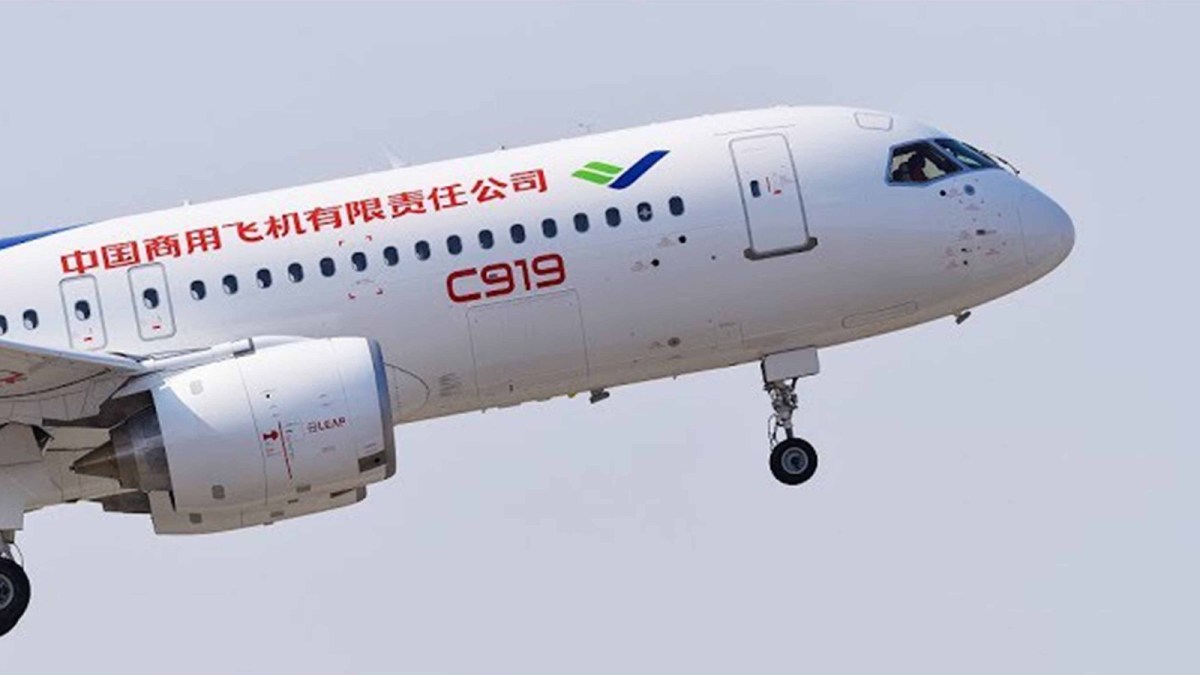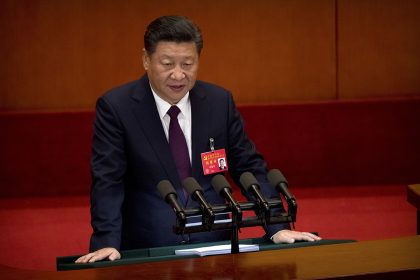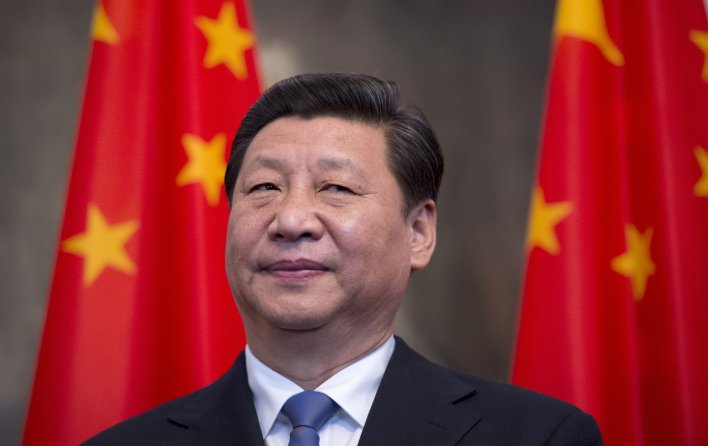[ad_1]
Aerospace is one of the key industries targeted by Beijing’s “Made in China 2025†drive. Could this become a problem for Boeing, Airbus and other non-Chinese suppliers of aircraft, aircraft engines and other related equipment?
The outgoing Donald Trump administration apparently thought so. In mid-January, it put Commercial Aircraft Corporation of China (COMAC) on its list of companies tied to the Chinese military.
This prevents Americans from investing in COMAC, although they would probably not do so anyway. COMAC is not publicly traded and has issued bonds only in the Chinese domestic market.
The Pentagon is concerned about China’s “military-civil fusion development strategy†– an alarming business model similar to those of Boeing, Raytheon and other American companies that serve both military and civilian markets.
“Military-Civil Fusion†has even become an American acronym, MCF, raising it to the level of official Washington, DC, claptrap.
As the Center for a New American Security reports, “MCF has emerged as a key analytic driver of the intensifying economic and technological competition between the United States and the PRC in recent years.†(www.cnas.org, Myths and Realities of China’s Military-Civil Fusion Strategy, January 28, 2021)
China’s MCF, however, is “misunderstood,†and its success is “hardly a foregone conclusion.†(ibid.) So is COMAC a threat or not?
COMAC may be added to America’s “Entity List,†meaning its American suppliers would have to receive special licenses from the Commerce Department in order to ship their products to COMAC.
This could be very serious since without key American components COMAC airplanes could not fly. Its American suppliers include engine makers Pratt & Whitney and CFM International (the GE-Safran joint venture), avionics suppliers Honeywell and Rockwell Collins, PPG Aerospace Materials and others.
COMAC was established in 2008 by the Aviation Industry Corporation of China, Aluminum Corporation of China, Baosteel Group Corporation, Shanghai Guosheng Corporation (an investment company) and the state-owned Assets Supervision and Administration Commission of the State Council (SASAC). SASAC has a majority stake in COMAC.
Two on the runway
COMAC is not controlled by the Chinese military but it is an instrument of national policy. As stated on its website: “The Party Committee of SASAC performs the responsibilities mandated by the Central Committee of the Chinese Communist Party.â€
COMAC now has two products, the ARJ21 regional jet (ARJ stands for Advanced Regional Jet) and the C919 narrow-body (single-aisle) jet aircraft.
The ARJ21 is a 78-90 seat passenger plane with a range of 2,225 to 3,700 kilometers. The first delivery was made in 2015 to Chengdu Airlines, which started commercial flights the following year.
China’s Global Times reports that close to 50 ARJ21s are now in service and that more than 20 were produced last year. According to COMAC’s website: “A total of 616 orders have been obtained from 23 customers.â€
The C919 is a 156-168 seat passenger plane with a range of 4,075 to 5,555 kilometers. It is undergoing flight tests now, with the first deliveries – to China Eastern Airlines – scheduled to be made by the end of this year. According to COMAC, “A total of 815 orders have been obtained from 28 customers.â€
The ARJ21 competes with regional jets made by Embraer of Brazil, Bombardier of Canada and, if it can ever get its SpaceJet into service, Mitsubishi Aircraft Corporation of Japan. The C919 will compete with Airbus A320 and Boeing 737 aircraft.
In 2017, COMAC and United Aircraft Corporation (UAC) of Russia formed the China-Russia Commercial Aircraft International Co, Ltd (CRAIC) to jointly develop a long-range, wide-body aircraft that will be assembled in Shanghai.
This is the CR929, a 280-seat wide-body (dual-aisle) passenger jet with a range of 12,000 kilometers. It is intended to compete with Boeing and Airbus long-haul aircraft, initially in China, Russia and the CIS, and eventually in the global market. Manufacturing is scheduled to start this year.
UAC was established in 2006 through the merger of Russian aircraft manufacturers Ilyushin, Irkut, Mikoyan, Sukhoi, Tupolev and Yakolev. Primarily a defense contractor today, it aspires to become a major supplier of commercial aircraft – as Ilyushin and Tupolev were in Soviet times.
Competitive threat?
Cutting off COMAC is not recommended by Scott Kennedy, Senior Adviser and Trustee Chair in Chinese Business and Economics at CSIS (the Center for Strategic & International Studies in Washington), who plays down the competitive threat.
According to Kennedy, “sanctions would hurt the US aerospace industry and ultimately American national security far more than they would harm China.†(csis.org, China’s COMAC: An Aerospace Minor Leaguer, December 7, 2020)
That is because “American companies account for almost three-fifths of the C919’s top suppliers. Almost one-third hail from Europe. Only 14 key suppliers are from China, and seven of those are Chinese-foreign joint ventures.†(ibid.)
As the Biden administration develops a practical response to the Chinese challenge, Kennedy’s view seems likely to prevail.
According to Kennedy, COMAC “isn’t even as capable as its long-time Russian counterparts Ilyushin, Sukhoi, and Tupolev, which have more advanced technology.†(ibid.) But this seems to be missing the point, which is that CRAIC has access to the technology required to build complete commercial aircraft.
In December, UAC began flight tests of the first Russian passenger plane equipped with Russian engines since the collapse of the Soviet Union – a medium-range MC-21 built by Irkut and powered by PD-14 turbofan engines built by United Engine Corporation.
Like UAC, United Engine Corporation is a subsidiary of Rostec, Russia’s State Corporation for Assistance to Development, Production and Export of Advanced Technology Industrial Products. It also makes engines for the Russian military and space program, as well as turbines for power generation.
As reported by Reuters, there are two versions of the MC-21: one powered by engines from Pratt & Whitney, the other by the PD-14. After a two-year delay caused by American economic sanctions, deliveries are expected to begin by the end of this year.
The sanctions forced Irkut to replace imported composite materials with equivalents made in Russia. This reinforces an often-made point that is usually ignored by the US government: sanctions make technically competent targets more competitive.
Market share
This doesn’t mean that China and Russia will take a significant share of the global market for commercial aircraft in the next few years. According to Global Times, a Chinese executive at CRAIC estimates that the CR929 could take 15% of the global market for long-haul passenger aircraft by 2045.
Considering the technological and managerial challenges of efficient mass production, and the history of Airbus, this appears to be a prudent assessment.
Boeing’s Commercial Market Outlook 2020-2039 forecasts that Chinese airlines will need to take delivery of about 8,400 new passenger aircraft in that time frame, nearly 20% of total worldwide demand.
Airbus was founded in 1970 by European governments and corporations in order to achieve the scale required to compete with the Americans. Within a decade, it had taken enough market share from Boeing to spark a dispute with the US over government subsidies. The larger Airbus grew, the more heated the dispute became.
In 2004, the US filed a case against EU subsidies to Airbus with the WTO. The EU retaliated with its own case against US government assistance to Boeing. The litigation continued until 2020, when the WTO ruled that since both parties had violated the rules, they could levy compensatory tariffs on each other.
The two cheaters demonstrated their commitment to high economic principles with a food fight. In addition to taxes on imported aircraft and aircraft parts, the US put tariffs on European wine, cheese and olive oil, while the EU put tariffs on American ketchup, orange juice and sweet potatoes.
After running neck and neck for more than a decade, the fatal Boeing 737 MAX crashes and subsequent groundings made it possible for Airbus to take the leading position in the industry in both 2019 and 2020 – 50 years after it was established.
Last year, with air traffic greatly reduced by Covid-19, China Eastern Airlines, China Southern Airlines and Air China postponed the delivery of more than 100 aircraft from Boeing and Airbus while continuing to receive deliveries from COMAC. Smaller Chinese airlines also took deliveries from COMAC.
COMAC delivered 24 ARJ21s in 2020, compared with total deliveries of 157 aircraft for Boeing and 566 for Airbus.
Most likely, the dispute over Chinese subsidies and market access is only beginning. But China and Russia combined are a huge market for passenger aircraft and import substitution alone all but guarantees the long-term viability of COMAC, UAC and CRAIC.
The degree to which Western engine and avionics suppliers will share in the growth of this market will depend on the attitudes of Western governments and the speed at which Chinese and Russian manufacturing capabilities develop.
Scott Foster is an analyst with Lightstream Research, Tokyo.
[ad_2]













